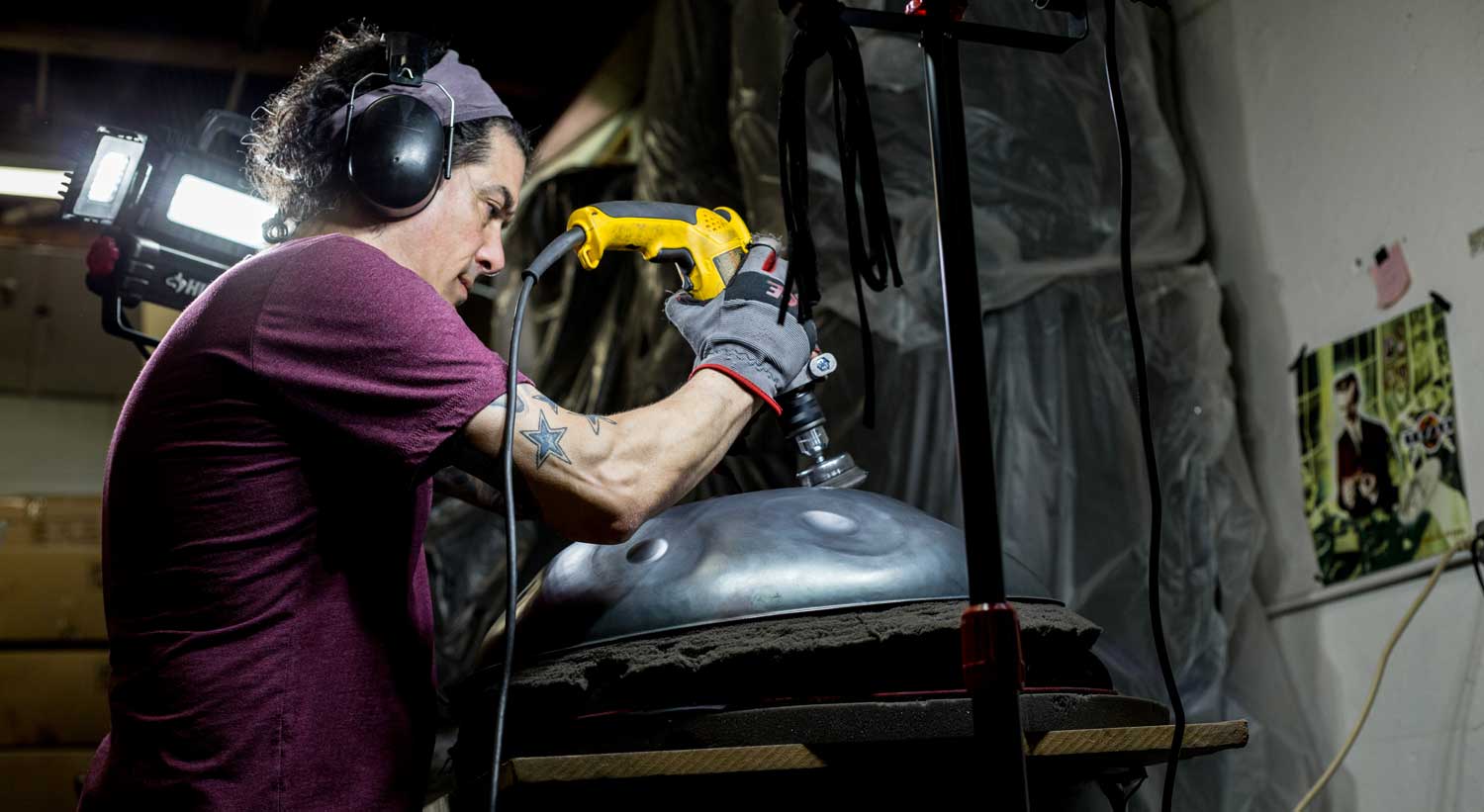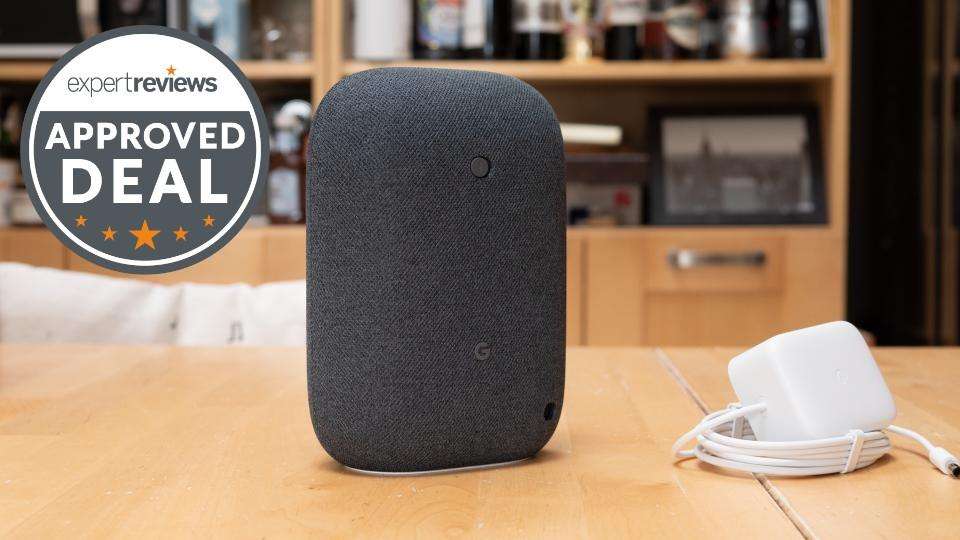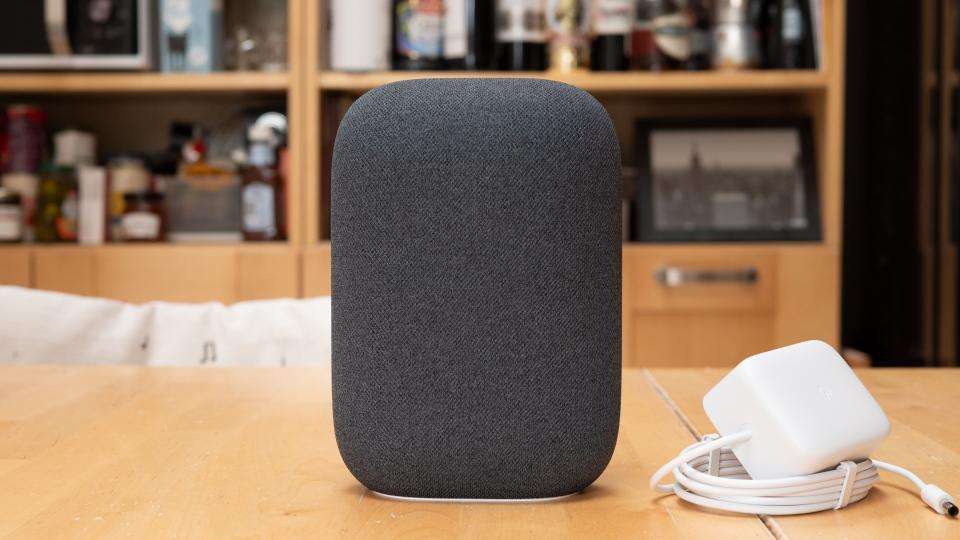Emergency Lighting - No Role for Portable Luminaires
By: Michael Shulman, UL principal engineer
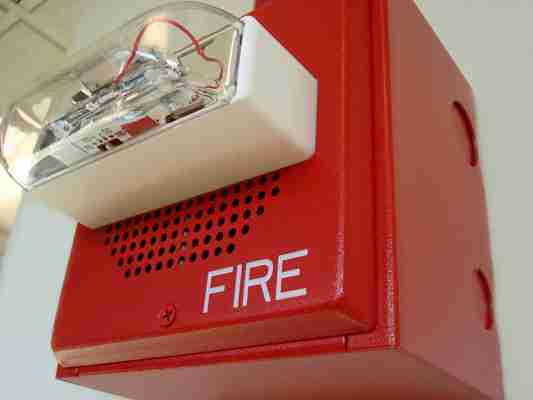
Luminaires are addressed in several sections of the National Electrical Code (NFPA 70, the NEC), most specifically in Articles 410 and 411. Emergency luminaires are subject to additional regulations, not only in Article 700 of the NEC but also in Section 7.9 of the Life Safety Code, NFPA 101. These Codes require emergency luminaires to be maintained and periodically tested to validate that they are ready for service. The Standard for Emergency Lighting Equipment (UL 924) in turn requires the luminaire to have features that allow for this testing to occur. The basic premise is to ensure that, upon loss of the normal utility power, the emergency lighting will provide sufficient illumination to facilitate the orderly and efficient evacuation of the building’s occupants. The regulations specifically ask the emergency lighting system to provide a minimum average level of illumination (1 foot candle, measured on the floor) between wherever people may be in the building and where they need to go (typically, outside the building to a public right of way). It covers hallways, stairwells, open office spaces, restrooms, and most everything in between; NFPA 101 defines this “Means of Egress” as “A continuous and unobstructed way of travel from any point in a building or structure to a public way.”
To verify compliance with these regulations, emergency luminaires must be fixed in place. That doesn’t mean that portable luminaires (with batteries) or even handheld devices like flashlights and cell phones cannot (or should not) be used to assist with a building evacuation, but the building will get no credit for them because there is no assurance that they will be available when needed. Only those luminaires that are part of the building infrastructure, and that therefore can reasonably be expected to be operational (in part due to the code-required maintenance and testing protocols), can be used to establish building compliance with NEC Article 700 and NFPA 101 Chapter 7.9.
In combination with LED efficiency improvements, power capacity advances (primarily with lithium chemistries) have spurred the introduction of battery backup power within many types of luminaires. Referring to these battery-backup products as “emergency luminaires,” however, may not be appropriate unless they comply with the applicable safety standard (UL 924) and are installed in accordance with the applicable codes. One such requirement in UL 924 is that the equipment is fixed in place.
An interesting recent development is tubular LED lamps (TLEDs) that can incorporate both driver electronics and a back-up battery. “Type A” TLEDs have standard ANSI pins to fit into legacy fluorescent bi-pin lampholders, and they are suitable for connection directly to a fluorescent ballast without any rewiring of the luminaire. A type A TLED with battery back-up would seem to provide a quick and easy way to upgrade an existing fluorescent luminaire to LED and “emergency luminaire” status. But ANSI-base lamps are considered consumables and are not part of the facility infrastructure. This type of lamp could subsequently be replaced, during normal facility maintenance and outside of any Fire Marshal regulatory oversight, by a standard fluorescent tube. There are several regulations within NEC Article 700 that speak to the concept of limiting access and control of emergency lighting to qualified and authorized personnel. While this new lamp type is not specifically addressed (yet), the ease at which required emergency lighting could be inadvertently undermined should not be lost on professionals working in this field.
UL 924 requires emergency luminaires to have “…means for permanent mounting” (clause 11.1) with an exception for equipment that weighs 100 pounds or more. A recently approved revision to the standard will allow a broader range of luminaires to be electrically supplied by cord-and-plug, to accommodate high bay (and similar) luminaires that are permitted to use such supply connection means and that can serve a constructive role in providing emergency illumination in certain facilities. Unit equipment (sometimes referred to as a “bug eye” luminaire that illuminates a space only when normal power is lost) is also permitted a cord-and-plug supply arrangement, but the supply receptacle is typically located high up on the wall where inaccessible to facility occupants. In both cases, the equipment is mechanically secured (fixed-in-place) to its approved location.
Like most regulations dealing with changing technology, this is an area that is subject to review during both the normal Code revision cycle (every three years) and whenever new and innovative products are submitted for certification. An understanding of the intent behind the regulations is vital when assessing whether a product can be certified within the existing requirements, or whether the requirements can (and should) be modified in ways that support their purpose while expanding the range of compliant product choices. This is where process transparency and the involvement of a broad stakeholder community in standard and code development are of great value. The UL 924 Standards Technical Panel is exactly such a community, with many members also actively participating in the work of the NEC and NFPA 101.
Emergency lighting is everyone’s business, and it is important that we are thoughtful and thorough when advancements in technology offer possibilities not previously available.
Triangle Sign Services
CASE STUDIES
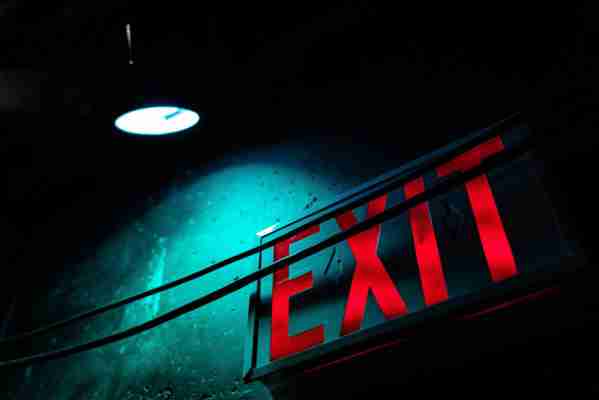
Industry & Interest
Design & Trends
NEWS
Do I Need Emergency Lights?
If you’re starting or reopening your business, you may have asked yourself
Do I really have to have emergency lights? And the short answer is yes. Whether this is your first endeavor opening a business space, or you’re looking to expand to new markets, no matter where you go, your space will need an emergency lighting system. And not only that, you’ll need to keep your emergency lighting system up to code.
What Is Emergency Egress Lighting?
Simply put, emergency egress lighting is lighting that stays on during a power outage that leads a path to safety exits from the building or space. “Egress” means by way of exit, so that means emergency lighting includes your EXIT signs, too!
Lighting is Key
We know as a retailer your mind is keen on top of mind, day to day tasks like current sales, marketing, and even the lighting of your product displays. You know good lighting plays an important role in the sale of your products—that’s why you spent all the time and money on good lighting systems to display your products in the best, most flattering light in the first place.
But what happens if you ignore the nitty gritty, perhaps not so alluring world of emergency egress lighting? Well, it could cost you.
What Happens If My Emergency and Egress Lighting Isn’t Up to Code?
It may very well be that your current facility or business space has emergency and exit lights. But are they up to code? This is an especially good question considering you’ll need to make sure your emergency lights are up to code if your business has been closed for a while due to the COVID-19 Pandemic.
By not addressing your emergency egress lighting, costs down the road could be substantial:
Code compliance penalties range in the hundreds of dollars, depending on city or state ordinances.
You risk potential shut down of facilities from retail operations, costing you hundreds of thousands of dollars, depending on when you can finally get the issues with your emergency egress lighting addressed.
You present a possible danger to the customer, which could lead to real personal injury in the event of an emergency or power outage and they can’t safely exit with a clearly marked path. And real personal injury leads to a real lawsuit or liability to you as the business owner.
And it’s not about getting your lighting up to code and then you wipe your hands clean of it. There’s more to it than that: we’re talking regular maintenance.
Maintaining Emergency Egress Lighting
To maintain your emergency lighting effectively, you’ll want a skilled team of professionals that are responsive to the specific lighting system you have. Nothing is worse than calling a company and realizing they can’t come out for weeks on end, or worse, when they do finally come, tell you they don’t work on that specific lighting system.
There are two approaches to maintaining your emergency lights:
1. Preventive, regular maintenance. This is the best way to stay on top of your emergency lights and avoiding any issues from a surprise visit from city inspectors.
2. Responsive maintenance. This is where you notice one or more of your lights are out, or something does kick on as it should when the power goes out and you need to call an electrical company to diagnose and eventually fix the problem. You can do self checks of your lights regularly to know when to call in maintenance or service for your emergency lights.
Obviously, preventative regular maintenance and lighting system checks is the ideal way to address your emergency lighting situation—but we get it. You’re a business that has a lot going on and we know that the “I’ll deal with it when I have to” mentality is convenient in a lot of ways.
That’s why it’s important to have a responsive lighting and electrical company in your back pocket when things start to fail. A national company that can serve any location you have across the U.S. is ideal. You know, like Triangle for instance.
What Do I Need to Do for My Emergency Egress Lighting?
1. You can install upgraded emergency lighting systems that need little maintenance. To keep it off your mind, but still have peace of mind, try going with a company that offers scheduled checks, can install self-diagnostic equipment, and has regular communication with the fire safety inspection teams to ensure you’re covered from all angles.
2. Make sure it’s code compliant. If you decide to go with an existing system at your facility of choice, make sure it’s fully up to code. Having a team of experts come in and put your mind at ease is the best way to make sure it’s running properly.
3. Have a dedicated lighting and electrical company that can either quickly respond to your needs or have scheduled for regular checks and maintenance so that your lighting systems are never flagged due to a state inspection.
Get Triangle Involved
Having Triangle’s Retainer Program is a great way to ensure your all your lighting and electrical systems are up to date, code compliant, and working well takes the issue off your brain, even when trouble arises.
If that’s not possible for your business plan, we’ll work with your brand however it best fits you.
Our service and maintenance teams are on call 24/7 across the U.S. with our carefully vetted and selected partners. There’s no need to place call after call to find a company that can do what you need when you need—Triangle really does it all.
Let us strengthen your brand!
The Importance of Exit and Emergency Lighting
In the event of an emergency fire situation breaking out in your building would you know where the nearest emergency exit would be for you to escape?
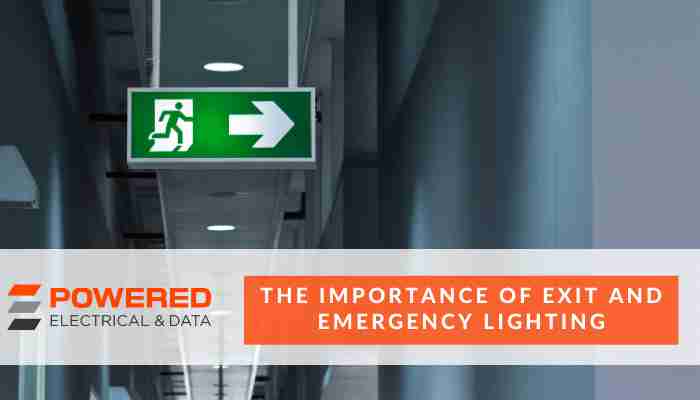
Making sure your employees and visitors feel safe in your business is extremely important. In Australia the installation of emergency/exit lights are in place to provide a safe path of travel during an emergency.
The installation of an LED Exit light gives peace of mind, knowing that your building is fully compliant and up to date with current Australian standards, which are designed to keep the general public safe in emergency situations.
If a power outage occurs, the path of egress must be clearly lit, and sign posted. Emergency lighting in stairs and hallways can provide assurance and assistance during a black out. It’s amazing how light can provide an instant calming affect during what otherwise is a stressful time, and the exit signs clearly show people where they must go, when an evacuation occurs.
What is an Emergency/exit Light?
An Emergency or Exit light is a light fixture that runs from your main power system and is installed with a built-in battery backup that turns on automatically when there is a power outage. Emergency lighting is required to meet the Australian Standards AS/NZS 2293 parts 1,2 and 3 and requires regular maintenance in order to stay compliant.
You may be asked to provide an Annual Fire Safety Statement to your local Council or insurance company to prove you have the correct lighting requirements for your building and that the equipment is being tested on a regular basis, as per the Australian Standards of Maintenance.
Annual Fire Safety Statements or Certificates are provided yearly, however the routine inspection of all Exit and Emergency lighting is every 6 months which consists of a 90 minute-discharge test. This testing is to ensure your exit and emergency lights hold on for a long enough period to enable everyone to find their way out of your building as safely and as quickly as possible. All records are logged and are required to be documented and provided as evidence of compliance.
Calmer during Emergencies
Exit signs, or the running man as many people may know them, changed from the word “exit” to the running man pictogram design in 2006, and are installed throughout your building pointing in the direction to the nearest exit. Emergency lighting can come in a range of different designs, the popular recessed spitfire light is easy to install and visually appealing. During an emergency first responders and emergency personal can get around a building, that they are not familiar with a lot faster when the emergency signs and lighting is in good working order.
How can we help?
Powered Electrical Data can compliance test Exit and Emergency lighting for your business or home which will include:
90-minute battery testing either using manual testing or circuit breaker testing.
Inspecting and replacing bulbs and lights as needed.
Inspecting and replacing diffusers.
Inspecting and replacing batteries.
Cleaning all light reflecting surfaces to ensure maximum illumination.
Checking for compliance with current safety standards in terms of distance and sign type.
Documenting the tests completed for your safety logbook and maintenance book.
What Kind Emergency Lights are there?
Emergency Lights can come in a variety of different styles, each fixture must be correctly installed for that specific environment.
Exit lights
These are placed within buildings internally to clearly illuminate the exits which are safe to be used during an evacuation.
Batten Lights
These are usually used in stairwells and carparks when more visibility is required.
Oyster Emergency Lights
Oyster lights can be found in common areas such as apartments when large amounts of light is required however they are required to be visually appealing a fit in with the current décor.
Spotfire/Spitfire Lights
These are reduced in size so are perfect when the appearance of a building’s décor needs to be taken into consideration.
Emergency lighting isn’t used just in business but in you may find it in common areas of residential apartments and sometimes people install emergency lighting in their home for added peace of mind that they will be able to find their way in an emergency situation, or maybe just have a light source if they are prone to blackouts.
Contact us
Exit and emergency lighting provides a sense of assurance to anyone who may use your building, and businesses are required to comply with these standards to ensure all emergency lighting is in perfect working order
If you feel your building is not adequately covered then it is best to seek the advice of an expert. Powered Electrical Data can provide a detailed quote to help get your building compliant with current Australian standards. We inspect and test emergency lighting in accordance with the Australian standards and can also provide safety switch testing, and electrical test and tag. For all your electrical needs please contact us today!


![31 Best IPTV Services for FireStick, Android TV, PC [Dec 2021]](https://www.lampsofbible.com/storage/upload/Images/_1639646173_nXrO23JGnM.jpg)
